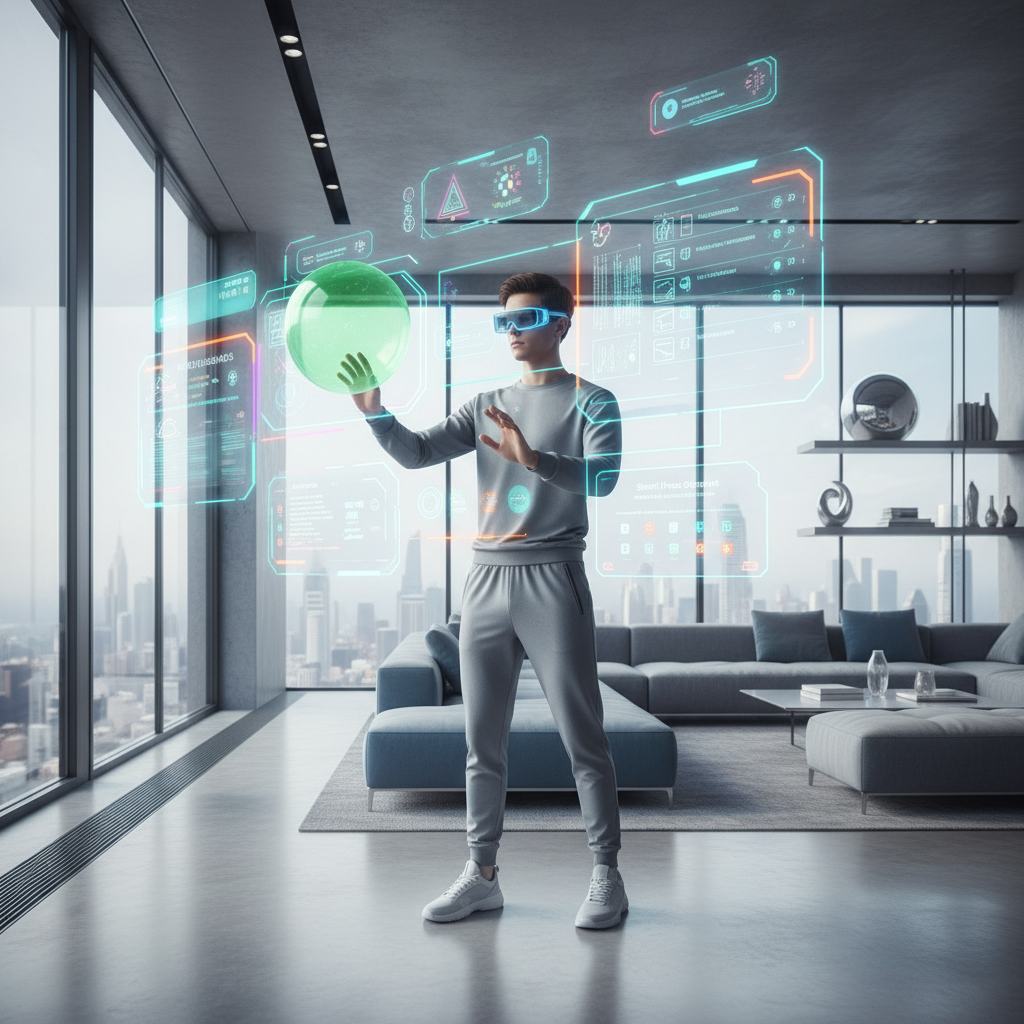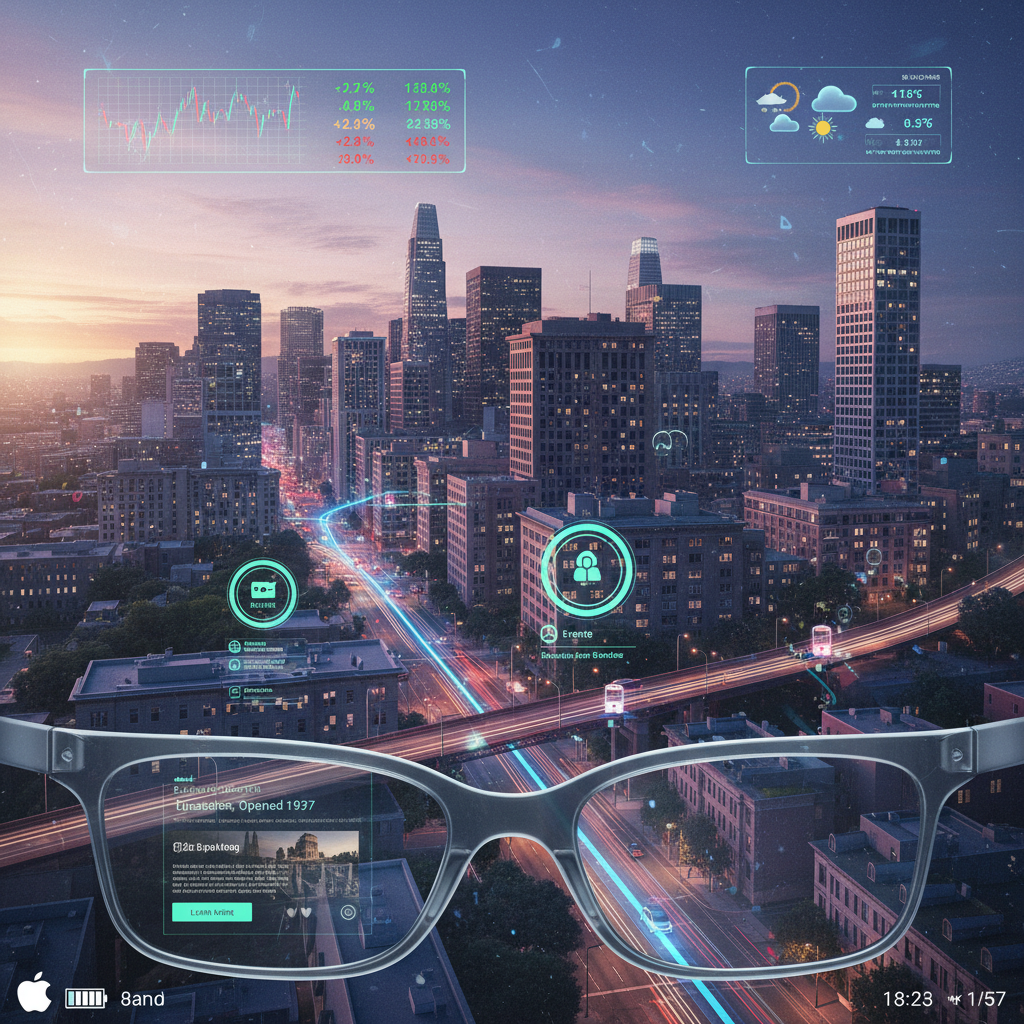The tech world buzzes with anticipation for Apple’s next big leap: augmented reality. While the Vision Pro has introduced us to spatial computing, the ultimate goal appears to be a lighter, more integrated device. These future Apple AR glasses promise to blend digital information seamlessly with our physical world, redefining interaction, entertainment, and productivity. Imagine a world where your digital life overlays your reality, instantly accessible and intuitively controlled. This is the promise of Apple AR glasses.

The Vision Pro: Apple’s First Step into Spatial Computing
Before truly lightweight Apple AR glasses arrive, Apple has launched the Vision Pro. This advanced mixed-reality headset offers a powerful glimpse into spatial computing. It boasts high-resolution displays, robust eye-tracking, and intuitive hand gestures, allowing users to interact with digital content that feels present in their space. The Vision Pro is a formidable piece of technology, showcasing Apple’s commitment to this new frontier.
Beyond the Headset: The Promise of Lighter AR Glasses
While impressive, the Vision Pro is a headset, not the sleek glasses many envision. Its current form factor, weight, and reliance on an external battery pack highlight the engineering challenges. The true vision for Apple AR glasses involves a design as comfortable and unobtrusive as traditional eyeglasses. This shift from a powerful, immersive headset to everyday AR glasses represents the ultimate evolution of Apple’s spatial computing ambitions. It requires breakthroughs in battery miniaturization, display technology, and processing power, all while maintaining Apple’s signature design elegance.
Anticipated Features and Technologies of Apple AR Glasses
What can we expect from these groundbreaking Apple AR glasses? Rumors and patents offer clues to the advanced technologies Apple is likely developing. The focus will be on seamless integration, powerful performance, and a user experience unlike any other wearable device.
Advanced Displays and Optics
Crucial to any AR experience are the displays. Future Apple AR glasses will likely feature micro-LED or similar advanced display technology. These displays offer incredible brightness, contrast, and pixel density in a tiny form factor. Combined with sophisticated optical systems, they will project vivid, high-definition images directly into the user’s field of view without obscuring their perception of the real world. This optical precision is vital for a convincing augmented reality experience.
Powerful Processors and AI Integration
Driving the complex computations required for AR will be custom Apple silicon. These chips, similar to the M-series in Macs or A-series in iPhones, will be optimized for spatial computing. They will handle real-time environment mapping, object recognition, and complex rendering. Furthermore, deep integration of artificial intelligence will allow the Apple AR glasses to understand context, anticipate user needs, and offer proactive assistance, making interactions more natural and efficient.
Intuitive Interaction and User Experience
Apple is renowned for intuitive interfaces. For Apple AR glasses, this will likely involve a combination of eye-tracking, subtle hand gestures, and voice commands. Users will navigate menus, select objects, and interact with digital content using natural movements, minimizing the learning curve. Haptic feedback could also play a role, providing tactile responses to virtual interactions. The goal is to make the technology disappear, leaving only the experience.
Health and Fitness Applications
Given Apple’s strong presence in health tech with the Apple Watch, it’s highly probable that Apple AR glasses will incorporate health and fitness tracking. Imagine receiving real-time workout metrics overlaid on your run, or guided meditation experiences that adapt to your surroundings. Environmental sensors could also monitor air quality or UV exposure, providing valuable health insights directly through your AR interface. This integration could open new avenues for personal wellness management.
Potential Use Cases and Impact of Apple AR Glasses

The potential applications of Apple AR glasses are vast and transformative, touching nearly every aspect of daily life. From the workplace to entertainment, these devices could fundamentally alter how we interact with information and each other.
Transforming Work and Productivity
In professional settings, Apple AR glasses could revolutionize workflows. Architects could visualize 3D models on-site, surgeons could access patient data during operations, and engineers could collaborate on virtual prototypes across continents. Remote work could become more immersive, with colleagues appearing as realistic avatars in a shared virtual space. The ability to overlay digital tools and information onto physical tasks offers unprecedented efficiency and innovation.
Enhancing Entertainment and Gaming
For entertainment, AR glasses promise new levels of immersion. Imagine playing games where virtual characters interact with your living room furniture, or watching sports with real-time statistics floating above the players. Live concerts could feature augmented visuals, and museums could offer interactive historical recreations. The distinction between physical and digital entertainment will blur, creating richer, more engaging experiences.
Revolutionizing Education and Training
Education stands to gain significantly. Students could explore historical sites virtually, dissect virtual organs in biology class, or learn complex machinery operations through interactive simulations. Training for various industries, from manufacturing to healthcare, could become safer and more effective by providing hands-on experience in a simulated AR environment. The dynamic visual learning offered by Apple AR glasses could make complex subjects more accessible and engaging.
Challenges and Hurdles to Overcome for Apple AR Glasses

Despite the immense potential, Apple faces significant challenges in bringing mass-market AR glasses to fruition. These hurdles range from technological limitations to societal acceptance.
Battery Life and Form Factor
Powering the advanced displays, processors, and sensors in a sleek, lightweight pair of glasses presents a monumental battery challenge. Current battery technology struggles to provide adequate endurance without adding considerable bulk. Apple will need innovative solutions for energy efficiency and potentially new battery chemistries to achieve an all-day wear experience without compromising design.
Pricing and Market Adoption
Apple’s premium pricing strategy, as seen with the Vision Pro, suggests initial Apple AR glasses will likely be expensive. For widespread adoption, the price point must become more accessible. Convincing consumers of the necessity and value of AR glasses will also be key, requiring compelling applications that go beyond novelty and integrate seamlessly into daily routines. Education and clear use cases will drive market acceptance.
Privacy and Ethical Considerations
The constant capturing of environmental data and user interactions raises significant privacy concerns. Apple will need to implement robust privacy safeguards and transparent data policies to build user trust. Ethical questions around pervasive digital overlays, potential distractions, and the impact on social interaction will also need careful consideration as AR technology becomes more ubiquitous.
The Road Ahead: When Can We Expect Apple AR Glasses?
The timeline for true Apple AR glasses remains a subject of intense speculation. While the Vision Pro has set the stage, a fully fledged pair of AR glasses is likely several years away. Apple typically takes its time with new product categories, ensuring maturity and a compelling ecosystem before a mass-market launch. We can expect iterative improvements to the Vision Pro and continued research into the core technologies that will power future, lighter devices. Patience will be key for those eagerly awaiting this next technological frontier.
Conclusion: The Future is Clear for Apple AR Glasses
Apple’s foray into augmented reality, spearheaded by the Vision Pro and culminating in the anticipated Apple AR glasses, marks a pivotal moment in technology. While challenges persist, the vision of a world where digital information enhances our reality is undeniably compelling. As Apple continues to innovate, these glasses could become as indispensable as the iPhone, ushering in a new era of spatial computing and redefining how we live, work, and connect. The future, through Apple AR glasses, promises to be more interactive, informed, and immersive than ever before.
